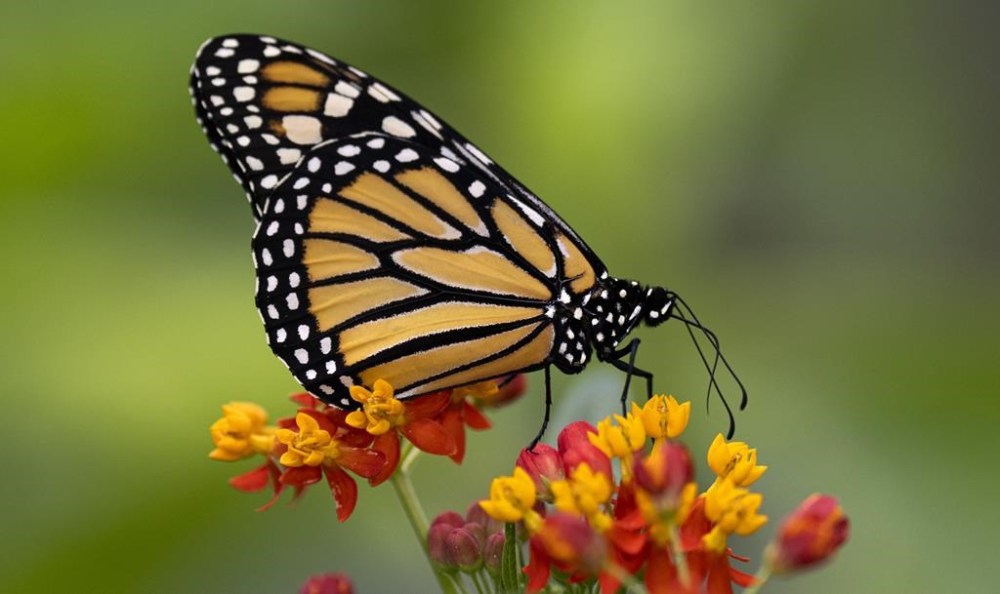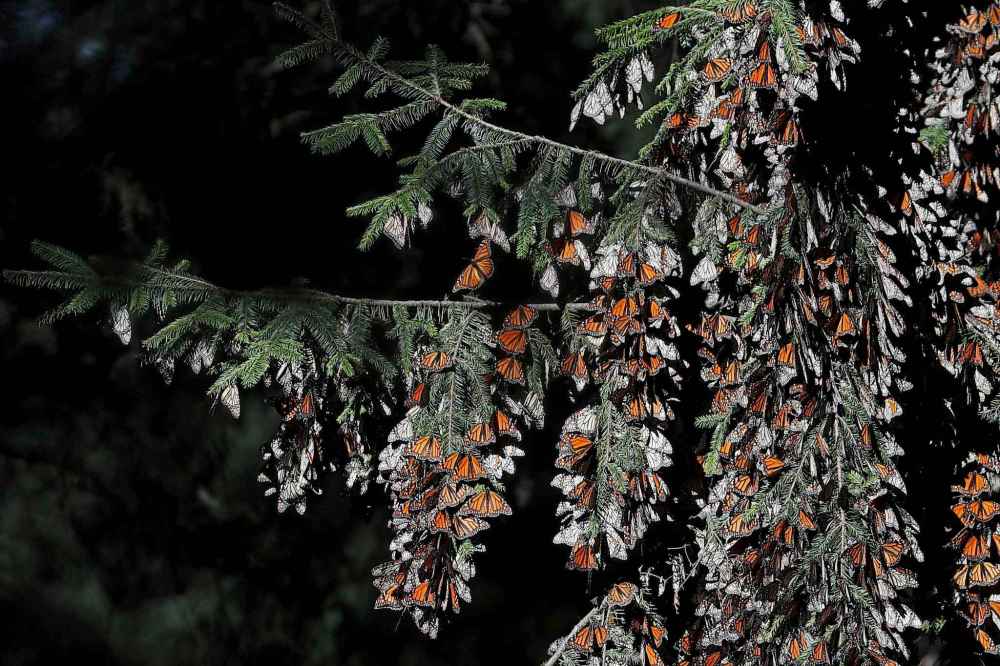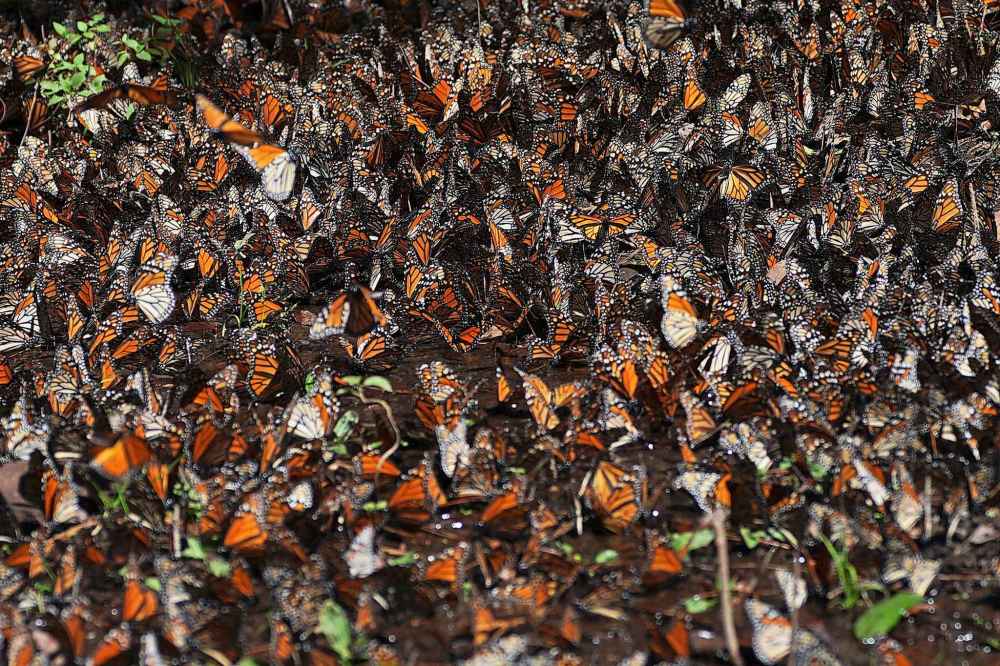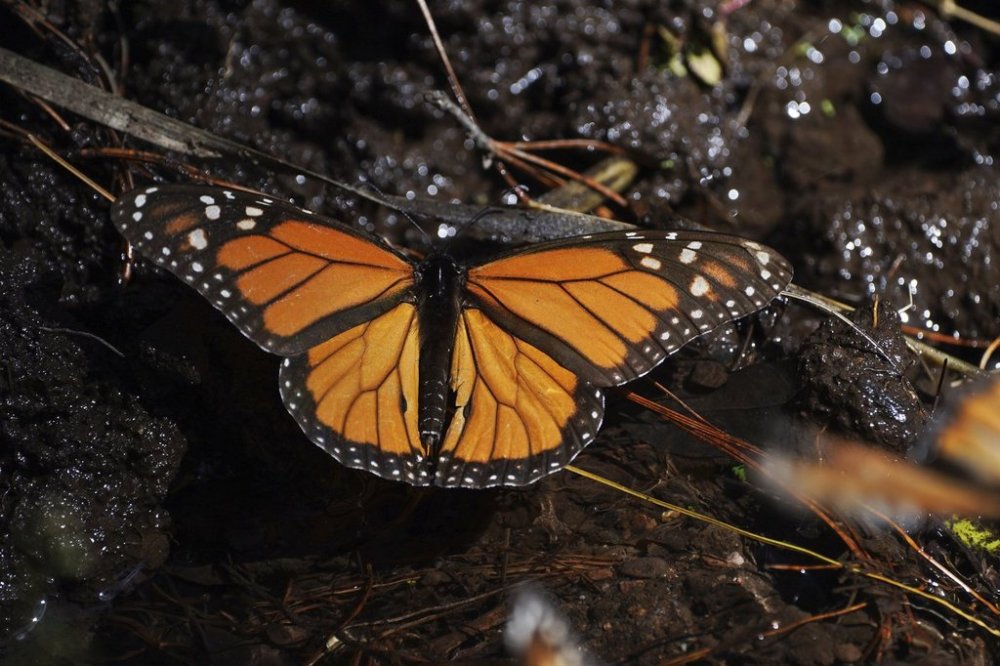Monarch butterflies wintering in Mexico rebound this year
Advertisement
Read this article for free:
or
Already have an account? Log in here »
To continue reading, please subscribe:
Monthly Digital Subscription
$0 for the first 4 weeks*
- Enjoy unlimited reading on winnipegfreepress.com
- Read the E-Edition, our digital replica newspaper
- Access News Break, our award-winning app
- Play interactive puzzles
*No charge for 4 weeks then price increases to the regular rate of $19.00 plus GST every four weeks. Offer available to new and qualified returning subscribers only. Cancel any time.
Monthly Digital Subscription
$4.75/week*
- Enjoy unlimited reading on winnipegfreepress.com
- Read the E-Edition, our digital replica newspaper
- Access News Break, our award-winning app
- Play interactive puzzles
*Billed as $19 plus GST every four weeks. Cancel any time.
To continue reading, please subscribe:
Add Free Press access to your Brandon Sun subscription for only an additional
$1 for the first 4 weeks*
*Your next subscription payment will increase by $1.00 and you will be charged $16.99 plus GST for four weeks. After four weeks, your payment will increase to $23.99 plus GST every four weeks.
Read unlimited articles for free today:
or
Already have an account? Log in here »
Hey there, time traveller!
This article was published 06/03/2025 (279 days ago), so information in it may no longer be current.
MEXICO CITY (AP) — The number of monarch butterflies wintering in the mountains west of Mexico City rebounded this year, doubling the area they covered in 2024 despite the stresses of climate change and habitat loss, experts said Thursday.
The annual butterfly count doesn’t calculate the individual number of butterflies, but rather the number of acres they cover as they gather on tree branches in the mountain pine and fir forests. Monarchs from east of the Rocky Mountains in the United States and Canada overwinter there.
Mexico’s Commission for National Protected Areas (CONANP) said that this year, butterflies covered 4.4 acres (1.79 hectares) compared to only 2.2 acres (0.9 hectares) the year before. Last year’s figure represented a 59% drop from 2023, the second lowest level since record keeping began.

After wintering in Mexico, the iconic butterflies with black and orange wings fly north, breeding multiple generations along the way for thousands of miles. The offspring that reach southern Canada begin the trip back to Mexico at the end of summer.
Gloria Tavera Alonso, the Mexican agency’s director general of conservation, said the improved numbers owed to better climatic factors and humidity. Drought along the butterflies’ migratory route had been listed as a factor in last year’s decline.
The impact of changes in weather year after year mean fluctuations are expected. For that, Jorge Rickards, Mexico director general for the World Wildlife Fund, said “you can’t let down your guard” and must continue to expand conservation efforts.
Tavera Alonso credited ongoing efforts to increase the number of plants the butterflies rely on for sustenance and reproduction along their flyway.
Butterflies have not been faring well north of the border.

The Xerces Society for Invertebrate Conservation has been counting western overwinter populations of monarch butterflies — a separate population from those that winter in central Mexico — along the California coast, northern Baja California and inland sites in California and Arizona for the last 28 years. The highest number recorded was 1.2 million in 1997. The organization announced in February that it counted just 9,119 monarchs in 2024, a decrease of 96% from 233,394 in 2023. The total was the second-lowest since the survey began in 1997.
And the first countrywide systematic analysis of butterfly abundance in the United States found that the number of butterflies in the Lower 48 states has been falling on average 1.3% a year since the turn of the century, with 114 species showing significant declines and only nine increasing, according to a study in Thursday’s journal Science.
Experts say that monarchs face risks across North America in large part due to the reduction in milkweed where the monarchs lay their eggs. The plant has been disappearing due to drought, wildfires, herbicides and urbanization.
In December, the U.S. Fish and Wildlife Service proposed that monarch butterflies receive protection as a threatened species under the Endangered Species Act.
____

Follow AP’s coverage of Latin America and the Caribbean at https://apnews.com/hub/latin-america




